The French Horn, often called the Horn, is a standard instrument used in a symphony orchestra. Usually made up of four to five players, the Horn section sits in the orchestra’s back row and adds color to the ensemble, and is associated with heroic themes to the music. This instrument’s history and evolution is a long and interesting one, from its beginnings from religious uses to the instrument used on today’s symphonic ensembles.
In this post, we’ll discover the history of the french horn, who invented it, where it originated and look at how it has evolved over the years to what we’ve come to know it as today.
The First Horns: The Horn’s Earliest Ancestors
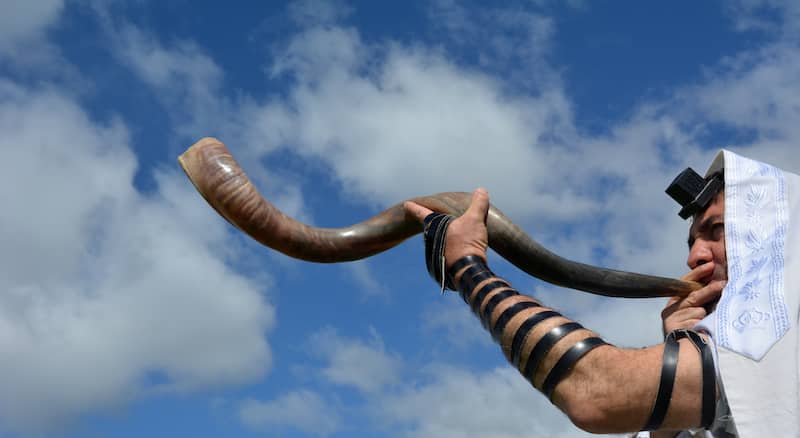
The earliest horns, made from a ram’s Horn, play an essential role in religious rituals from ancient times to today.
This Horn, called a Shofar, comes in various shapes and sizes and is used in Jewish synagogue services such as Rosh Hoshanah and Yom Kippur’s holidays.
Much like a valveless bugle, it relies on the player’s embouchure for the change and control of pitch.
Other early ancestors to the Horn include the Lur Horn and the cow horn.
Made of wood or bronze, the Lur Horn dates from 1500-500 BCE.
The oldest known Lur, the bronze, varied in measurements from around 3 feet to over 7 feet in length.
Like the shofar, this instrument did not have valves, slides or finger holes and also relied on the player’s use of embouchure.
Due to its length, the bronze Lur was made with a curve to make carrying more manageable.
The purpose of these horns was to signal troops and frighten enemies during wartime.
Wooden Lurs, measuring around 3 feet long, were used through the Middle Ages in Scandinavia.
Its first use around 800 BCE and still used presently, cow, bull, or steer horns is for hunting and signaling purposes.
Played in the same manner as the shofar and Lur horns, these horns vary in sound due to varying sizes.
The Early Horns: From Signaling Device to Musical Instrument
As mentioned above, the first horns where used as communication devices to signal to friends and foe. But, they also began to be used for other purposes as we’ll look at now.
The Hunting Horn
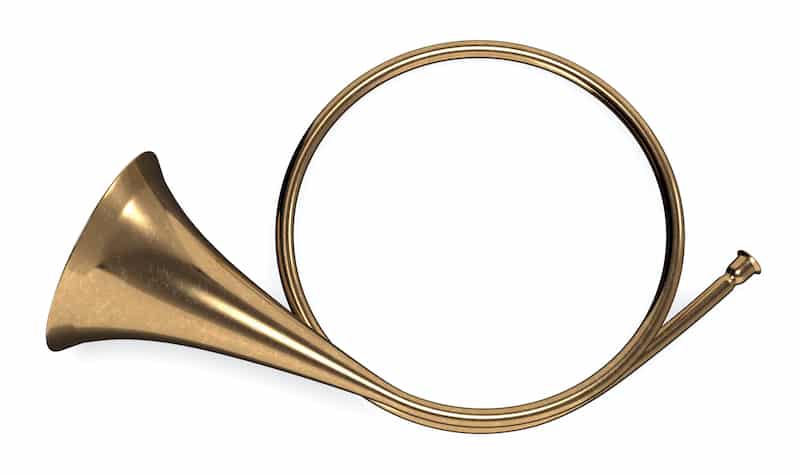
The large circular shape of the Horn as we know of it today made its first appearance in France around 1650.
Primarily used for hunting by the nobility, the circular shape enables hunters to carry the instrument while being mounted on horses.
The horns’ bells started to become positioned to the rear not to obstruct the players’ way.
Four different types of hunting horns began to develop which included the calling horn, a horn of many turns, a horn with one turn and a big horn.
In 1664, French composer Jean Baptiste Lully was the first to include horns in a ballet.
Composers liked the sound of the instrument and began to have it in their compositions to depict hunting.
Even though French Horns made progress at becoming an orchestral instrument, it was still limited to its capabilities as it only had the notes in a harmonic series available.
As composers in the Baroque period continued to include horns in their compositions, the music required different horns throughout rehearsals and performances.
The changing of these horns proved cumbersome and expensive.
The Natural Horn
The next step in developing the Horn is from Bohemian horn virtuoso to Dresden, Anton Joseph Hampel’s court.
A playing technique, called hand muting and stopping, enabled the hornist to play more pitches on the instrument.
This technique includes manipulating the hand inside the bell of the Horn.
Along with Dresden instrument maker Johann Werner, Hampbel designed a horn with detachable crooks to make orchestral Horn playing easier.
Honed and perfected between 1750 and 1755, this Horn, with its detachable crooks and the use of the hand horn technique, not only made transpositions in keys easier, it made full chromatic scales possible.
These changes also brought about horn concertos, including two concertos from Joseph Haydn and four from Wolfgang Amadeus Mozart.
With the changes in music composition styles of the late 18th century and 19th century, the Horn needed to change its evolution.
The Invention of the Valved Horn
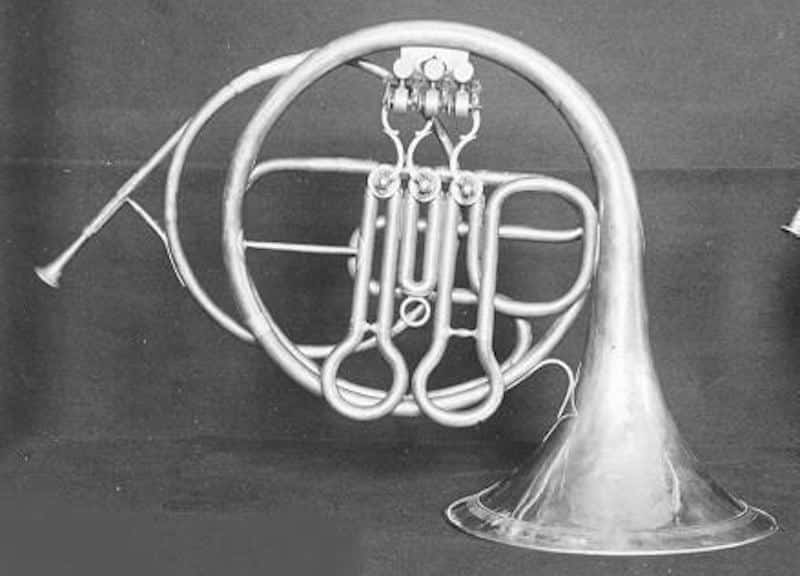
In 1814, a German hornist Heinrich Stölzel, with a quest of making Horn playing less cumbersome, developed the first playable valved Horn.
This horn features two valves that redirect the air into different lengths of tubing in the instrument.
Depressing the first valve lowers the pitch a whole step while depressing the second valve lowers the pitch a half step.
Pushing both the first and second valve lowers the pitch one and a half tones.
This invention opened more possibilities to players and composers as it gave the instrument an even sound throughout the chromatic scale, which made the carrying of extra tubing unnecessary.
In 1818, Stölzel, with a colleague and inventor Friedrich Blühmel, pattened the two-valve chromatic Horn.
The use of piston valves was introduced in France in 1839 by instrument maker François Périnet.
Early valved horns consisted of the smaller, French-made horns with piston valves and the larger, German-made horns with rotary valves.
However, the early valved Horn’s adoption into mainstream horn playing circles was slow due to the valves’ unreliability, musical taste and mistrust.
Due to the compositions for horns and the instrument’s further development, the valved Horn eventually found its way into the mainstream.
Invention and Evolution of the Modern Horn
With its extensive history and evolution, it isn’t easy to pinpoint who invented the French Horn.
However, the modern single and double horns were German horn maker Fritz Kruspe’s inventions in the late 19th century.
Modern Horns consist of single, double and triple horns. Horns today also have the versatility of a detachable bell.
The Single Horn
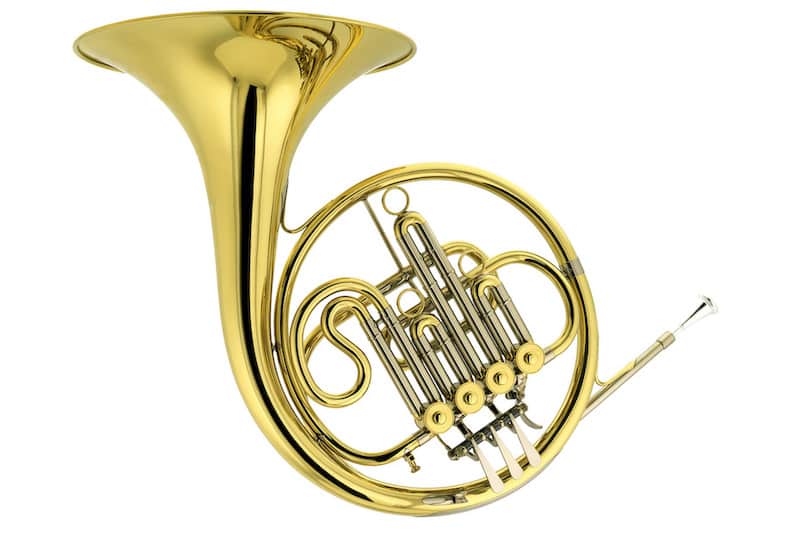
Often played by beginning Horn players today, the Single Horn is lighter in weight with three rotary valves and a single set of tubes known as slides.
Even though it is suitable for beginners and younger players, it didn’t prove easy to play in the upper register.
Sighting these difficulties with the Single Horn in the late 19th and early 20th century, Fritz Kruspe invented another solution: The double horn.
The Double Horn
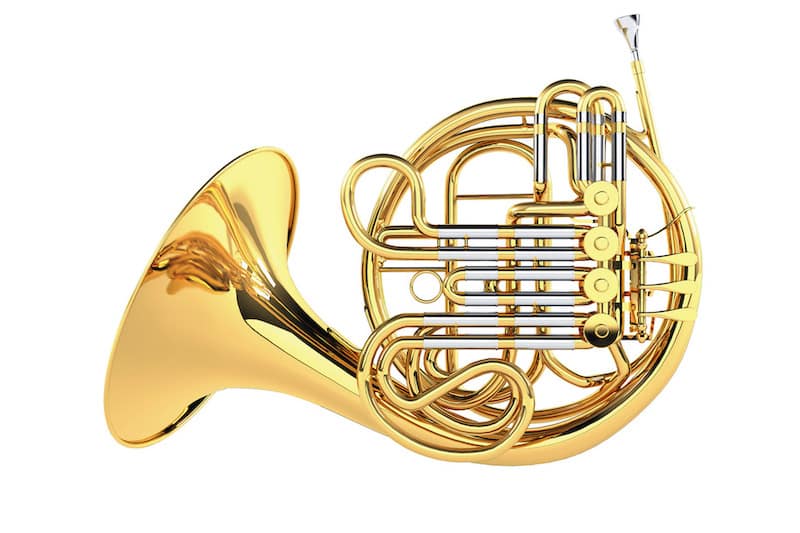
Produced as a prototype in 1897 in 1900, Kruspe solved the Single Horn’s acoustic difficulties by adding another tubing set and an extra valve to the instrument.
Commonly used in orchestras today, the double horn has slides on the top and smaller ones beneath them.
Combining both slide sets makes it easier for the musician to play the instrument in its full range with more accuracy.
The Triple Horn
Less commonly used than the double horn, the triple horn comes equipped with an extra thumb valve that facilitates the musician to play higher pitches via a third side of the instrument.
The French Horn Today
Nowadays, the French Horn is used extensively in orchestral music and is a key instrument in a standard orchestra.
As well as orchestras, chamber groups and brass bands the Horn also makes an occasional appearance in other musical genres such as jazz, rock and symphonic metal.
Summing Up The French Horn
In the classical music world and Horn playing communities, French Horns are referred to as simply Horns.
To clear the confusion in the terminology of the instrument’s name as that many nations often named it as Horn, The International Horn Society declared that the French Horn be known as Horn in the English language in 1971.
However, due to the education of elementary in middle school music students and the word Horn’s usage referring to any wind instruments in other musical genres, French Horn is still used to describe it. it.

